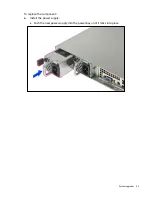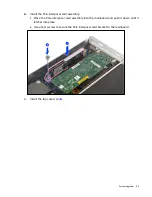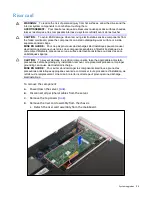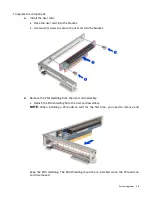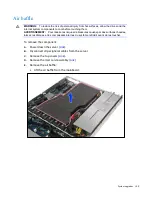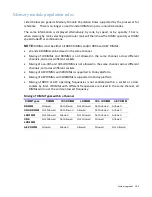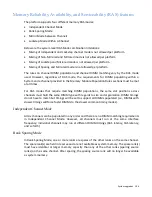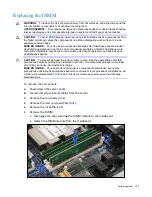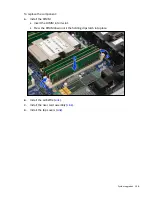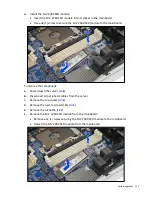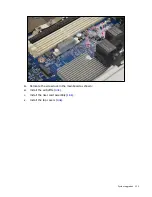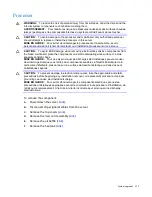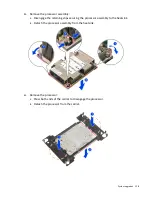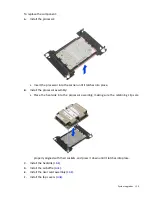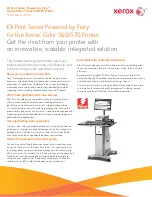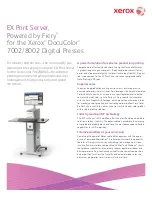
System upgrades 104
Memory Reliability, Availability, and Serviceability (RAS) features
The platform supports four different memory RAS modes:
•
Independent Channel Mode
•
Rank Sparing Mode
•
Mirror Mode between Channels
•
Lockstep Mode Within A Channel
Below are the system level RAS Mode combination limitations:
•
Mixing of Independent and Lockstep channel mode is not allowed per platform.
•
Mixing of Non-Mirrored and Mirrored mode is not allowed per platform.
•
Mixing of Lockstep and Mirrored mode is not allowed per platform.
•
Mixing of Sparing and Mirrored mode is not allowed per platform.
The rules on channel DIMM population and channel DIMM matching vary by the RAS mode
used. However, regardless of RAS mode, the requirements for DIMM populating within a
System and a channel provided in the Memory Module Population Rules sections must be met
at all times.
For RAS modes that require matching DIMM populations, the same slot positions across
channels must hold the same DIMM type with regards to size and organization. DIMM timings
do not have to match but timings will be set to support all DIMMs populated (i.e., DIMMs with
slower timings will force faster DIMMs to the slower common timing modes).
Independent Channel Mode
All six channels can be populated in any order and there are no DIMM matching requirements
in Independent Channel Mode. However, all channels must run at the same interface
frequency. Individual channels may run at different DIMM timings (RAS latency, CAS latency,
and so forth).
Rank Sparing Mode
In Rank Sparing Mode, one or more ranks are spares of the other ranks on the same channel.
The spare rank(s) are held in reserve and are not available as system memory. The spare rank(s)
must have identical or larger memory capacity than any of the other ranks (sparing source
ranks) on the same channel. After sparing, the sparing source rank will no longer be available
as system memory.



